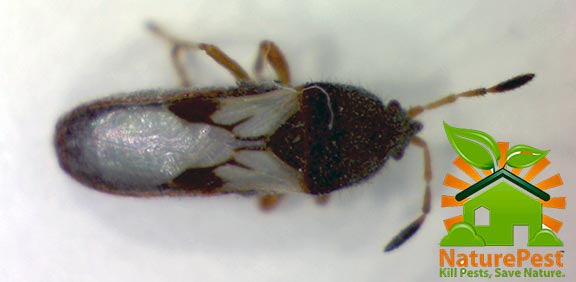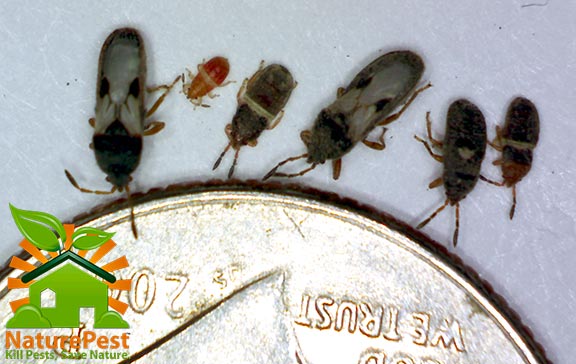2 Steps To Control Chinch Bugs Florida
Podcast: Play in new window | Download
Subscribe: Apple Podcasts | RSS

2 Steps To Control Chinch Bugs Florida first is to correctly identify you have chinch bugs and second is to select the right insecticide to control it.
If you have a St Augustine lawn in Florida you will get chinch bug it’s not a mater of if but how often.
The southern chinch bug, Blissus insularis its scientific name is a common insect pest of St. Augustinegrass.
This tiny pest is responsible for millions of dollars in lawn damage per year, as homeowners and commercial property managers seek to control chinch bug outbreaks by applying insecticides or replacing damaged grass.
Southern chinch bug was first found in the United States in Orange County, NC in 1783 and ever since then chinch bug has become a notorious pest throughout the southern United States.
The southern chinch bug seams to have an affinity for St. Augustine grass and is the second most expensive plant feeding pest in Florida.
Southern chinch bug thrives in the warm wet summer months and infestations peak during early July. The southern chinch bug will sometimes overwinter in a temporary dormant state in northern Florida,
The southern chinch bug usually stays active during the winter sheltered around the roots and base of St. Augustinegrass. The southern chinch bug does not need to leave its feeding ground thus the spring infestations often begin where the pest injury stopped the preceding season.
Chinch Bug Movement into new areas
Southern Chinch Bug typically remain in the same area throughout the year. The southern chinch bug has the ability to fly, however only a small proportion of the population appears to fly as a means of dispersing.
In most cases a population of Southern chinch bug moves from lawn to lawn within a neighborhood by walking from a heavily infested area unto un infested areas to feed.
During their relocation the southern chinch bug may cover over 400 feet in under an hour theses creatures are fast tireless walkers.
The Life Cycle of the Southern Chinch Bug
An adult female chinch bug can deposit over 250 eggs on average in her lifecycle, she may lay as little as 4 eggs per day, but she will oviposit for many continuous weeks.
Female chinch bugs deposit there eggs in St. Augustine grass close to where the plant contacts the dirt.
During the summer months the eggs will hatch in 6 to 13 days, with the average period of incubation being 11 days. This process may last a month or more during the winter months.
The newly emerged southern chinch bug nymphs resemble smaller, wingless adults. In the first nymphal instar is yellow. The color changes to red with a pale white band across the abdomen and finally to black with a similar white band as the insect progresses through the five nymphal instars that the chinch bug goes through.
The adult southern chinch bug has a black body the wings are white with a black spot on the margins of the forewings.
There are two forms of southern chinch bug the long-winged form and the short-winged form.
The length of the adult chinch bug life span differ significantly with averages ranging from 10 to 70 days.
Chinch Bug Damage Damage Identification
A lawn infested with southern chinch bug will display discolored patches which are usually in a circular in pattern this is most often confused with brown patch fungus.
The injury typically will occur first in areas the are water stressed, along the edges of the lawn or grass growing in full sunlight.
In infested lawn southern chich bugs will distribute vertically from the turf thatch down into the upper organic layer of soil. When Southern chinch bug infetations are high, the chinch bugs can be seen running over the grass blades.
Southern chinch bug mainly feed in the area of the plant between the turf thatch and the organic soil level.
Large numbers of chinch bug nymphs and adults will gather at the base of one plant, as they feed, chinch bugs will drain the sap from the grass until it withers, turning from a healthy green color to a brown-yellow color, and finally dies Once the feeding group has killed one section of grass stolons, they move as a unit to the next adjacent stolon, continuing their destruction of the lawn.
Monitoring and Diagnosis Southern Chinchbug
A yellow or brownish spots or areas on your St. Augustine grass does not necessarily mean you have a chinch bug infestation.
Improper irrigation, root rot or lawn diseases, nematodes or other insect problems may cause similar symptoms.
To ensure that you perform the proper service for the right pest you must properly diagnose or identify the chinch bug infestation.
You could perform the chinch bug flotation method but that is too much work. You can get overly scientific about it.
How To test for chinch bug using the flotation method
Get a coffee can remove the bottom of a metal coffee so you can insert the can into the ground in the area surrounding the discolored grass concentrating on the perimeter of the injured spots, to ensure proper diagnosis as the chich bugs will move away from the dead areas to feed on live grass.
Use a knife, shovel to dig out the edges around the can in the soil of the can so you can push the can down about 3 inches into the soil.
With a garden hose fill the can with water continuously for five minutes.
If you have chinch bugs they will float to the top of the water. Repeat this method at least four times throughout the discolored area.
Method 2 Much is much simpler if you know what a chinch bug looks like
Find the area of damage go to the edge where the dead grass meets the green grass, go in between 1 to 6 inches into the green part and pull apart the grass look through the thatch into the soil area, if there are chinch bugs you will see them running about quickly.
Repeat this process 3 to 5 times to confirm. This takes no more than 2 minutes to perform. This is the method I use.
Chinch Bug Control
The best practice for preventing chinch bug infestations is integrated pest management to reduce the potential of chinch bug infestations and reduce the damage to turfgrass.
The IPM method includes proper fertilization, irrigation, mowing, and pest control.
In IPM the most important part is the cultural control practices, including proper mowing, fertilization, and irrigation, can greatly reduce the susceptibility of St. Augustine grass to chinch bug infestations. A scalped, dry over or under fertilized lawn will be much more susceptible to chinch bug and other lawn pests and disease.
St. Augustinegrass should be mowed to a height of 3 to 4 inches to ensure a strong root system, which increases the grass’s tolerance against chinch bug infestations. All Lawns should be mowed as frequently as required so that no more than 1/3 of the leaf blade is removed at each mowing as this will remove all the food stored in the leaf blade producing stress to the lawn making more susceptible to chinch bug infestation and damage.
Always make sure you mower blade is sharp, mowing with a dull blade will shred the leaf and make it susceptible to pest and diseases not to mention an ugly looking lawn.
Excessive applications of inorganic nitrogen fertilizers such as urea can cause fast green and grass growth but heightened chinch bug susceptibility. To reduce the potential infestation and damage after fertilizing, use a water insoluble, slow release lawn fertilizer.
Excessive water in lawns also encourages chinch bug infestations. To avoid over watering you can irrigate when wilting begins that is when the edges of the grass leaves start to curl up. It is better to water deep and less often that to water frequently and little.
Excessive watering and fertilizing can cause a thick layer of thatch to accumulate directly above the soil surface. Thatch is a spongy mat of shoots, stems, and roots which provide a great place for chinch bugs to feed and lay their eggs.
Chemical control of Chinch Bugs
Chinch bugs are now a huge problem because they have developed a resistance to insecticides. In the past the only type of pesticides that where available where contact insecticides usually pyrethroides.
This class of insecticide kills the insects on contact but require multiple of applications to break the life cycle and kill the nymphs and adults because most cannot kill the egg the insect hatch shortly after a chemical application but the insecticide is no longer there. I you just made one application or had a pest control company make only one spray chance are you sprayed but you did not achieve control.
I our business we use exclusively systemic insecticides for our lawn care program.
Most will disagree with this practice but when you manage hundreds of thousands of square feet of lawn all in different parts of a city you don’t have the time nor the luxury to wait until the customer calls you to inspect and to re-spray there lawn. Customers pay for control not sprays and call backs destroy profits and the confidence your customer has in you.
Unless you are an onsite technician or a golf course superintendent you will not be there everyday to inspect that lawn for the first sign of trouble. Therefore you cannot expect what you do not inspect.
Why systemics are better for lawn care than pyrethroids.
While pyrethroids or contact insecticides work for chinch bug control you have to make an application come back in a week inspect for chinch bugs and nymphs and re spray if you find any, come back in a week and do it again. This is the only way you can be sure you got control and then for how long. In addition to that chinch bugs are now resistant to many pyrethroids.
Systemics targets the chinch bug directly and indirectly, it acts as contact when the chinch bug come in contact with the insecticide but gives you long term control of nymphs and adult because it enter the plants vascular system through the roots. When a cinch bug is born it will have to feed on the plant which is contaminated with the pesticide, when it feeds that is its last meal. End of story.
With systemics you get long term control and quick knock down. In the past 6 years since we have used systemics we only get an average of 2 call backs per route per year.
We apply it every 2 months at the mid dose range. I put no trust in any product I trust in my knowledge, experience and expertise. I inspect, monitor and repeat to ensure the products are working.
We use and recommend Dominion 2L why because it works as well as any brand name systemic at a lower cost.
One 27.5 bottle is enough to treat 55,000 square feet at the mid level dose.
Order Dominion 2L Systemic Insecticide
Unfortunately there are no reliable natural pesticide that provide control for all lawn pests in the natural and organic or biological eco friendly pesticide market you have to be a true pro in order to id every pest and then purchase all the targeted products to have on hand to control the pest you encounter them.
The best environmentally responsible way is to monitor, inspect and treat when required. Remember to always follow label directions and us all recommended personal protection equipment. Keep these and all chemical products away from children.
Enjoy a pest free lawn Cheers!
Source
http://entnemdept.ifas.ufl.edu/creatures/orn/turf/southern_chinch_bug.htm
To get more information on our lawn care program or for a free lawn consultation give us a call.









